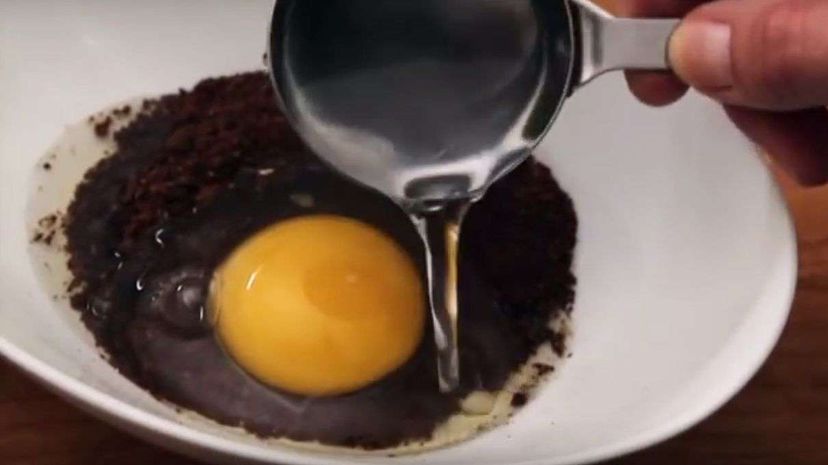 “Egg as a coffee ingredient may be new to you, but it’s been used for years. Screen capture from Tastemade
“Egg as a coffee ingredient may be new to you, but it’s been used for years. Screen capture from Tastemade
Order Vietnamese egg coffee, cà phê trứng, in Hanoi and you’ll be served a coffee that’s silky like a custard and made from egg yolk, sweetened condensed milk and coffee. Try the Norske egg kaffe, a Norwegian egg coffee (also known as Scandinavian egg coffee), and you’ll find no custard in your cup — or any discernible egg at all, actually. That’s because the egg in this instance isn’t used as part of the beverage; it’s used as a filter and clarifying agent during the brewing process.
Scandinavian countries top the world in coffee consumption. For example, each Norwegian, on average, consumes just about 22 pounds (10 kilograms) of coffee beans annually, placing Norway consistently among the world’s top three coffee-drinking countries. A nation that brews nearly 10 times the amount of coffee as the rest of the world probably knows a thing or two about drinking coffee, right?
Today, many living in Scandinavian countries may not be familiar with the trick to brewing egg coffee. But the technique continues elsewhere, sometimes known as “church basement coffee,” at potlucks in Lutheran communities in the American Midwest, as well as among outdoor enthusiasts who may know the recipe as cowboy or camp coffee.
Making egg coffee requires just three ingredients:
- Water
- Coffee, coarsely ground
- 1 whole egg, raw (with or without the shell)
Method:
- Boil 1 cup of water for every one cup of coffee desired. For instance, for 3 cups of coffee, boil 3 cups of water.
- Measure 1 tablespoon of coarsely ground coffee per 1 cup of boiling water.
- Mix coffee grounds, egg and 3 tablespoons cold water into a paste.
- Add the coffee-egg mixture to the boiling water, stir well and turn down the heat.
- Simmer for 3 minutes, and remove from heat.
- Add 1 cup cold water. The coffee grounds will continue to bind with the egg, and will sink to the bottom.
- Strain or ladle the liquid into individual cups or a large vessel.
While it may sound like an odd combination of things, the technique works because as the coffee grounds and egg simmer in the water, the egg acts as a fining agent and binds to the grounds. Fining agents, such as gelatin, isinglass and casein are often used to clarify wine; similarly, egg whites (called albumen) are a natural protein fining agent.
The idea here is the egg replaces the traditional paper or metal filter. As the particles of coffee grounds and egg clump together in a process known as flocculation, the clumps, called “floc,” rise to the surface. With the addition of the cold water at the end of the brewing cycle, the floc acts as a fine filter. As the clumps and larger particles of coffee grounds and egg sink to the bottom of the pot, they clarify the liquid: As they descend they pick up remaining colloidal particles suspended in the liquid — fine grounds that would normally settle to the bottom of the cup.
What remains once the floc has sunk is a clear, amber-colored coffee that’s considered, at least among the devoted, less bitter than traditionally filtered coffee, and that when strained or ladled to avoid the grounds, leaves minimal sediment deposits at the bottom of the cup.
Skål!
NOW THAT’S COOL
In Norwegian, “kaffe” means coffee; “kaldt vann” means cold water; and “egg” means, well, egg.



























